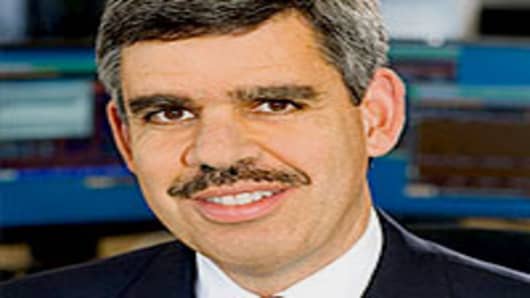Given the high market expectations, the US Federal Reserve had no choice but to announce asecond tranche of quantitative easing, nicknamed QE2. But the measure is an inevitably blunt instrument for the difficult task of restoring growth and generating jobs. The benefits accruing to America come with burdens for other countries, and both could soon be swamped by the unintended consequences of this unavoidably imperfect policy approach.
By signalling its intention to purchase another $600bn of longer-term Treasury securities by the end of June 2011, the Fed hopes its injections of cash will lower interest rates, bolster asset prices, increase wealth and encourage households and companies to spend and hire. Moreover, by noting the possibility of doing more if the data disappoint, it is also hoping that markets could price in the institution’s future asset purchases, turbo-charging the direct policy impact before those purchases have even been specified.
While willing to act, the Fed is acutely aware that the potential benefits come with the certainty of collateral damage, and the likelihood of adverse unintended consequences.
The Fed faces three problems, with its solo role being the first. Having warned in late August in Jackson Hole that “central bankers alone cannot solve the world’s economic problems”, Ben Bernanke, the Fed’s chairman, is now leading an institution that is virtually on its own among US policymakers in meaningfully trying to counter the sluggishness of the US economy and the stubbornly high unemployment.
Other government agencies are paralysed by real and perceived constraints, seemingly happy to retreat to the sidelines and let the Fed do all the heavy lifting. But liquidity injections and financial engineering are insufficient to deal with the challenges that the US faces. Without meaningful structural reforms, part of the Fed’s liquidity injection will leak right out of the US and result in yet another surge of capital flows to other countries.
The rest of the world does not need this extra liquidity, and this is where the second problem emerges. Several emerging economies, such as Brazil and China, are already close to overheating; and the eurozone and Japan can ill afford further appreciation in their currencies.
Despite polite rhetoric to the contrary in the lead up to the Group of 20 leading economies summit in Korea this month, other countries are likely to counter what they view as an unnecessarily disruptive surge in capital flows caused by inappropriate and short-sighted American policy. The result will be renewed currency tensions and a higher risk of capital controls and trade protectionism.
The third issue relates to the gradual erosion of America’s central role in the global economy – including as the provider of both the world’s reserve currency and its deepest and most predictable financial markets. No other country or multilateral institution can displace the US, but a combination of alternatives can serve to erode its influence over time. No wonder commodity prices surged higher and the dollar weakened markedly in anticipation of QE2, pointing to increased input costs for American companies and unwelcome pressures on their earnings.
The unfortunate conclusion is that QE2 will be of limited success in sustaining high growth and job creation in the US, and will complicate life for many other countries. With domestic outcomes again falling short of policy expectations, it is just a matter of time until the Fed will be expected to do even more. And this means Wednesday’s QE2 announcement is unlikely to be the end of unusual Fed policy activism.
The Fed would be well advised to prepare for this possibility from now. In doing so, it should insist that any further use of its balance sheet be subject to two overriding conditions.
First, rather than constitute yet another solo effort, the use of the Fed’s balance sheet should be one component of a more holistic US policy approach that addresses both demand and structural reform issues; and second, that such a policy response be accompanied by correlated, if not co-ordinated, actions in other countries. Without that, the Fed risks finding itself crossing the delicate line that separates a courageous policy approach from a counterproductive one.
The writer is chief executive and co-chief investment officer of Pimco


